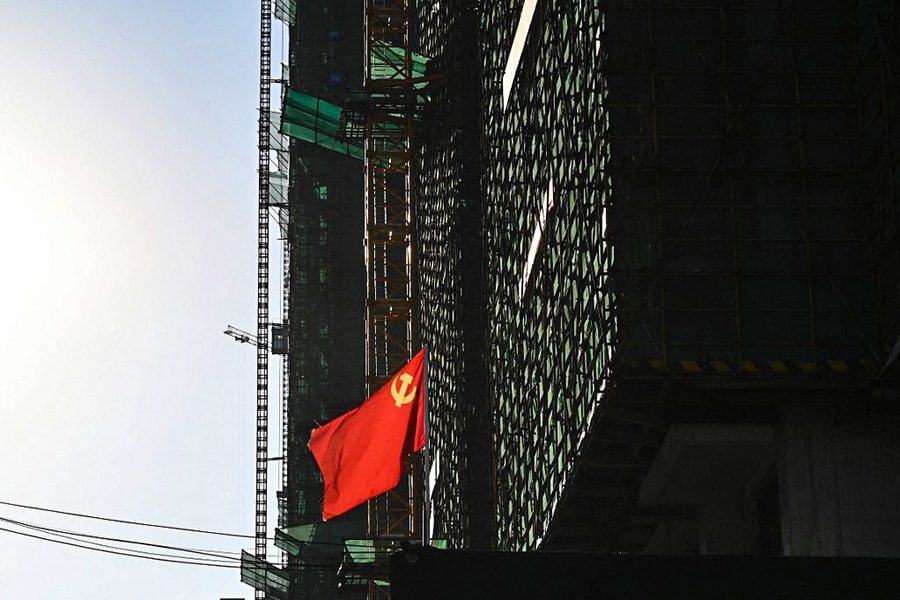
China's economy continues to slow, rattled by real estate and energy
The National Bureau of Statistics announced that China's economy increased by 4.9 percent in the third quarter, compared to the same period last year
 A communist party flag is seen at the construction site of an Evergrande housing complex in Zhumadian, central Chinaís Henan province on September 14, 2021. Problems in real estate pose a major threat to the Chinese economy. Photo by JADE GAO / AFP
A communist party flag is seen at the construction site of an Evergrande housing complex in Zhumadian, central Chinaís Henan province on September 14, 2021. Problems in real estate pose a major threat to the Chinese economy. Photo by JADE GAO / AFP
BEIJING — Steel mills have faced power cuts. Computer chip shortages have slowed car production. Troubled property companies have purchased less construction material. Floods have disrupted business in north-central China.
It has all taken a toll on China’s economy, an essential engine for global growth.
The National Bureau of Statistics announced Monday that China’s economy increased by 4.9 percent in the third quarter, compared to the same period last year; the period was markedly slower than the 7.9 percent increase the country notched in the previous quarter. Industrial output, the mainstay of China’s growth, since the early days of the pandemic.
Two bright spots prevented the economy from stalling. Exports remained strong. And families, particularly prosperous ones, resumed spending money on restaurant meals and other services in September, as China succeeded once again in quelling small outbreaks of the coronavirus. Retail sales were up 4.4 percent in September from a year ago.
Chinese officials are showing signs of concern, although they have refrained from unleashing a big economic stimulus. Their own efforts, though, are part of the current economic challenges.
©2019 New York Times News Service







